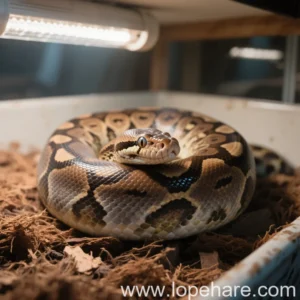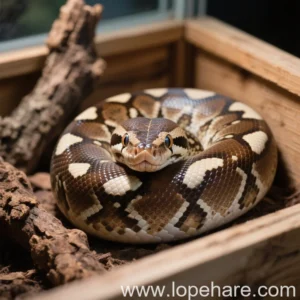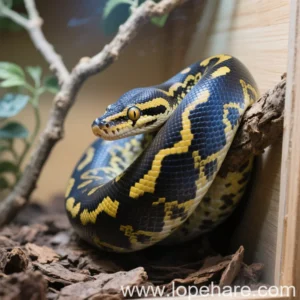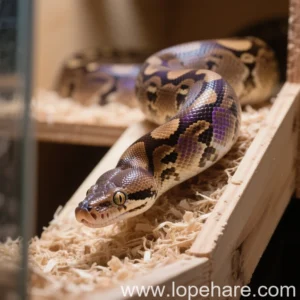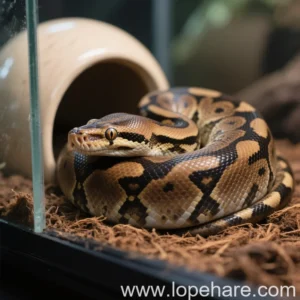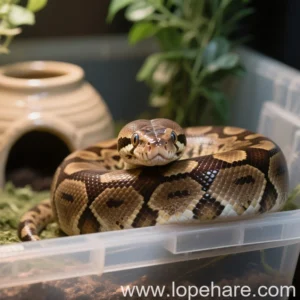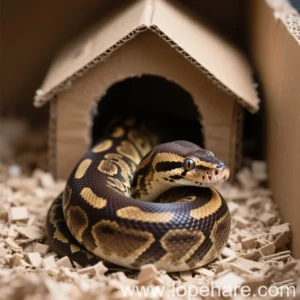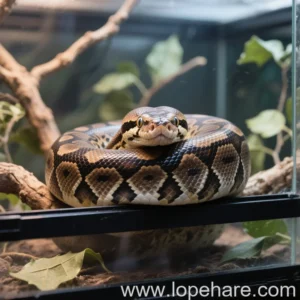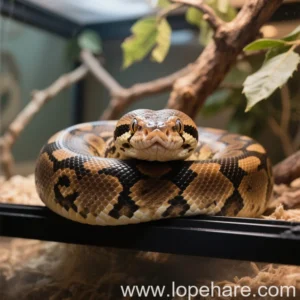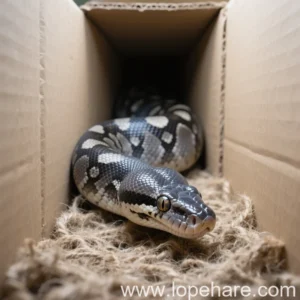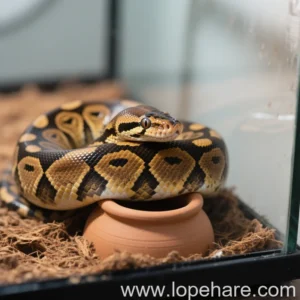Reptile Husbandry
Ball Python Enclosure Cleaning: Step-by-Step Disinfection Routine
Greetings from lopehare! As a website dedicated to providing comprehensive and professional care knowledge for exotic pets, we often emphasize that maintaining a clean environment is one of the most fundamental, yet critical, aspects of keeping any animal healthy. For ball pythons, which are particularly susceptible to respiratory issues and skin infections in unsanitary conditions, a rigorous cleaning and disinfection routine isn’t optional – it’s essential for their long-term well-being. Let’s walk through how to clean a ball python tank properly, covering everything from daily spot checks to monthly deep cleans and disinfection.
Why Regular Cleaning is Crucial
A ball python’s enclosure is their entire world. Waste products (feces, urates), shed skin, uneaten food, and spilled water can quickly become breeding grounds for harmful bacteria, fungi, and parasites. Poor sanitation directly contributes to common health problems in captive reptiles, including:
- Respiratory Infections (RIs): Often caused by bacteria thriving in humid, dirty conditions. Symptoms include wheezing, mucus, and open-mouth breathing.
- Scale Rot: Bacterial or fungal infections of the scales, often starting from prolonged contact with wet, soiled substrate.
- Mouth Rot (Stomatitis): Bacterial infection in the mouth.
- Parasites: Mites, ticks, and internal parasites can flourish in unclean environments.
Regular cleaning removes these hazards, helps control odors, and allows you to monitor your snake’s health and habits during the process.
How Often to Clean
A layered approach to cleaning is best:
- Daily: Spot clean waste and spilled water.
- Weekly: Replace substrate, wipe down surfaces.
- Monthly: Full breakdown, scrub, and disinfection of the entire enclosure and decor.
Essential Cleaning Supplies
Gathering your supplies before you start makes the process smoother. You’ll need:
- Disposable gloves
- Paper towels or clean rags
- Reptile-safe cleaning solution (or recommended disinfectant)
- Scrub brush or sponge (dedicated for enclosure use only)
- Trash bags
- Bucket(s)
- Fresh substrate
- A temporary secure container for your ball python during cleaning
Safety First: Always use cleaning products specifically recommended as safe for reptiles or follow established disinfection protocols with proper rinsing. Never use harsh household cleaners like ammonia or pine-based products, which are toxic to reptiles.
Daily Spot Cleaning
This is quick and easy but makes a big difference in preventing odor and bacteria buildup.
- Visually inspect the enclosure.
- Identify and scoop out any feces, urates (the white/yellowish part of waste), or soiled substrate using gloves and paper towels.
- Wipe down any areas soiled by waste with a reptile-safe spot cleaner or plain water.
- Remove any uneaten prey items left from the previous feeding.
- Refill or clean the water bowl as needed.
Weekly Partial Cleaning
Time to refresh the main environment.
- Carefully remove your ball python and place them in a secure, temporary container with ventilation. Ensure the container is escape-proof and placed in a safe, warm spot away from drafts.
- Remove all substrate.
- Wipe down all interior surfaces (walls, bottom) with a reptile-safe cleaner or warm water.
- Clean or replace climbing branches, hides, and other decor as needed.
- Rinse surfaces thoroughly if using a cleaning product other than plain water.
- Add fresh substrate.
- Return clean/dry decor and water bowl.
- Return your ball python to the clean enclosure.

Monthly Deep Clean & Disinfection
This is the most thorough cleaning and disinfection process and is vital for breaking the lifecycle of potential pathogens. Aim for this routine every 4-6 weeks, or more often if your snake has been ill or if using a substrate known to harbor bacteria (like cypress mulch).
- Remove your ball python to a secure temporary container.
- Remove ALL contents from the enclosure: substrate, decor, water bowl, etc.
- Dispose of old substrate.
- Pre-clean: Scrub the enclosure thoroughly with warm water and dish soap (ensure it’s fully rinsed afterward!) to remove all visible debris, waste, and residue. This step is crucial because disinfectants work best on clean surfaces.
- Clean decor: Soak and scrub hides, branches, and other items. Porous items like wood can be baked at a low temperature (around 250-300°F / 120-150°C for 30-60 mins *after* they are dry) to sterilize, but watch carefully for fire hazards. Plastic items can be scrubbed and then disinfected.
- Proceed to disinfection (see steps below).
- Rinse EVERYTHING thoroughly with fresh water to remove all traces of disinfectant.
- Allow everything to air dry completely before reassembling the enclosure. This is critical, as residual moisture and disinfectant fumes can be harmful.
- Add fresh substrate and return dry decor.
- Return your ball python.
Choosing a Safe Disinfectant
Not all disinfectants are created equal, and many common household products are toxic to reptiles. Recommended options for reptile enclosures include:
- Diluted Bleach: A common and effective option. Use a 1:32 dilution (1 part bleach to 32 parts water, which is about ½ cup bleach per gallon of water). Must be thoroughly rinsed. *Never* mix bleach with other cleaners, especially ammonia.
- F10SC Veterinary Disinfectant: A highly regarded veterinary disinfectant that is effective against bacteria, viruses, and fungi. It typically requires less rinsing than bleach, but follow product instructions carefully.
- Chlorhexidine (e.g., Nolvasan): Another veterinary disinfectant option, often used as a 1:30 dilution. Requires thorough rinsing.
Always follow the manufacturer’s instructions for dilution and contact time (how long the surface needs to remain wet with the solution to kill pathogens).
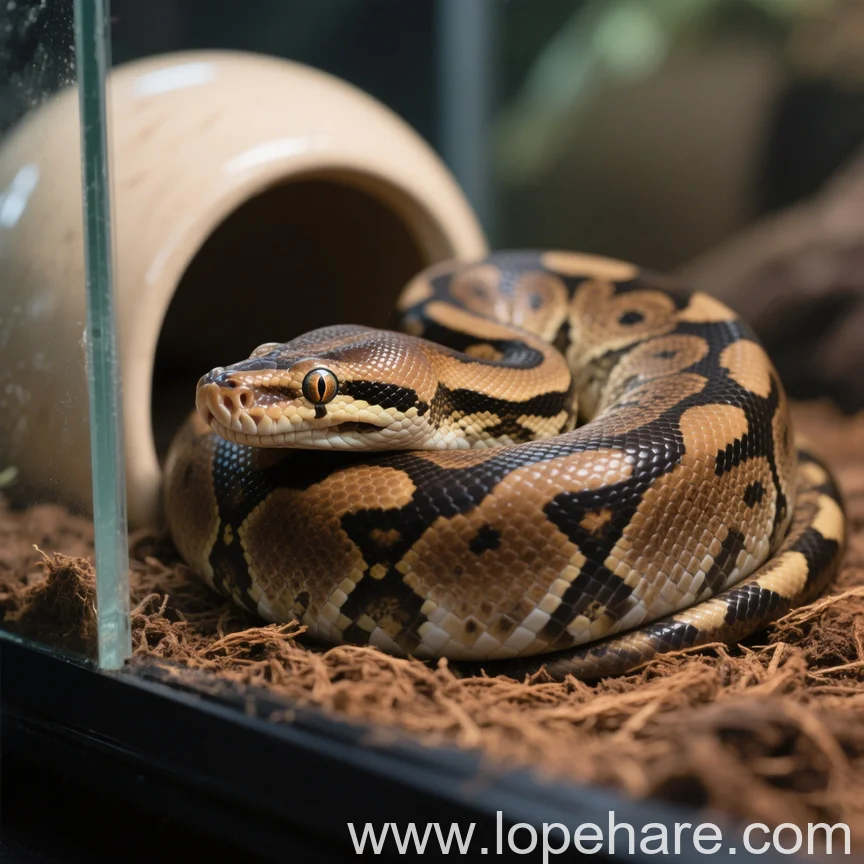
Disinfection Process
After pre-cleaning to remove organic matter:
- Apply the chosen disinfectant solution to all interior surfaces of the enclosure using a spray bottle or cloth. Ensure all surfaces are visibly wet.
- Apply disinfectant to all decor items after they have been scrubbed clean.
- Allow the disinfectant to remain on the surfaces for the recommended contact time specified by the product (typically 10-15 minutes for bleach, check F10SC/Chlorhexidine labels).
- Rinse EVERYTHING thoroughly with copious amounts of fresh water. Rinse multiple times to be safe.
- Wipe down with paper towels to remove bulk water, then allow to air dry completely.
Ventilation is Key: Perform disinfection in a well-ventilated area. Disinfectant fumes can be harmful to both you and your pet.
Drying and Ventilation
This step is often overlooked but is absolutely crucial. Any residual moisture can encourage mold and bacterial growth, and residual chemical fumes can be toxic to your ball python’s sensitive respiratory system. Ensure the enclosure and all decor are completely dry before adding substrate and returning your snake.
A well-ventilated enclosure, like those with screen tops or vents, is also vital for promoting air flow and helping surfaces dry out between cleaning sessions, which discourages pathogen growth.
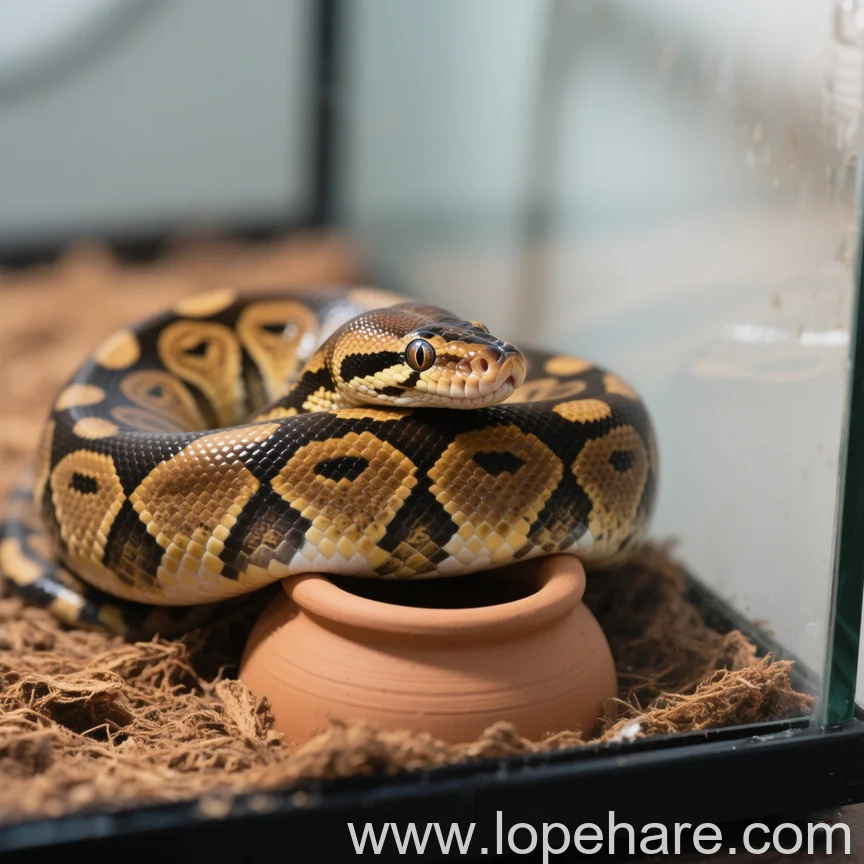
Conclusion: A Healthy Home
Maintaining a strict cleaning and disinfection schedule is perhaps the single most impactful thing you can do to ensure the health and longevity of your ball python. It might seem like a chore, but prevention is always better (and cheaper!) than treating illnesses caused by poor hygiene. By following these steps, you’re providing your scaled companion with the clean, safe environment they need to thrive, embodying the commitment to professional and comprehensive care that lopehare champions for all small exotic pets.
References:
- Ventilation (architecture) – Wikipedia
- Information on reptile husbandry and sanitation protocols is widely available through veterinary resources and experienced reptile keepers. Specific dilution rates for disinfectants should always be confirmed with the product label or a qualified reptile veterinarian.
